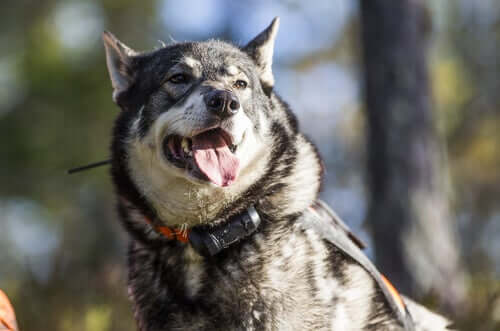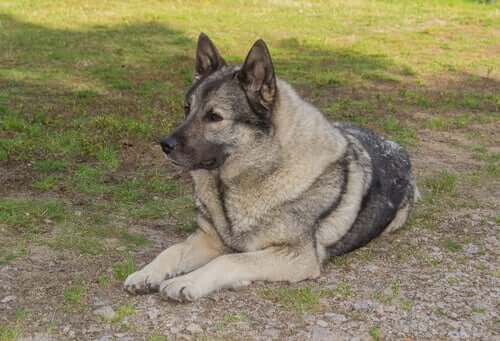The Norwegian Elkhound

The Norwegian Elkhound may look like a crossbreed of sheepdogs and huskies. However, this dog is much older and has accompanied arctic hunters for over a millennium. Below, we’ll tell you more about the Norwegian Elkhound.
History of the Norwegian Elkhound
The Norwegian Elkhound is an ancient breed. Archaeologists have found their remains in settlements dating back to 40,000 BC, making it one of the oldest breeds still alive today. We know from their recent history that they have accompanied Scandinavian hunters for over a thousand years. They’ve been used for hunting big game, especially moose and bears.
They’re a large dog with bold characters and can track scents from miles away, making them great hunting companions. Once they’ve located their prey, they’ll bark continuously to alert their owner.
When Arctic explorers first brought them to the Americas, they became great companion dogs. They’re beautiful dogs, with good characters, and adapt well as house pets.
Characteristics
They’re very similar to other spitz dogs: s hort, square and compact. People love the fact that they also have a curled tail, like similar breeds.
They have triangular ears that sit atop their wide heads, their noses are always black, and they have dark eyes. They can look quite dim, as their faces aren’t as pronounced as other breeds. There’s also a significant difference between their skulls and noses. It’s also very obvious that they’re closely related to wolves.
Adults can grow to about 19 inches tall and can weigh between 44 and 55 pounds, making them medium-sized. But, because their fur is so thick, they look much bigger than they actually are.
And the color of their coat can vary between different shades of black and grey. The grey is lighter on the belly and the underside of the tail, while the ears and nose are a darker color, almost black.
Behavior

The Norwegian Elkhound is used for hunting, herding, and land protection. They’re versatile and adapt well to different situations. Therefore, they’re quite happy to both work and keep their family company.
Because of their hunting history, they’re brave and tenacious, as well as agile and energetic. When a dog has these characteristics, they need a lot of physical exercise, as well as mental exercise. In fact, an intelligent canine like the Norwegian Elkhound needs to be given mental challenges to satisfy its working instinct.
Being stubborn, but loyal and affectionate are signs of their primitive breed. They’re very social and loyal to their human family, but have trust issues with strangers and other dogs. Barking is very uncommon in Nordic breeds, but the Norwegian Elkhound won’t hesitate to bark at the presence of strangers.
Because of their stubborn nature and the fact that they’re intelligent means that it’s impossible to use force, dominance, punishment, and pain as training methods.
However, they’re very receptive to positive training. They show great determination to collaborate with humans, so rewarding and praising them will accelerate their training.
Caring for Norwegian Elkhounds
Because they have such long, thick coats, it’s important to groom them regularly to get rid of dead hairs and avoid matting.
While they’re well suited to withstand freezing temperatures, they can adapt well to warmer weather. Their coats have two layers that create an air chamber that will protect them from both hot and cold temperatures. This is why Norwegian Elkhounds should never have their fur cut or shaved.
As far as their health is concerned, there are no diseases associated with this breed. However, like all large dogs, they are prone to hip or elbow dysplasia . Therefore, always attend regular checkups at the vets to prevent problems.
The Norwegian Elkhound is a breed that has survived thousands of years thanks to their good character, versatility and beauty.